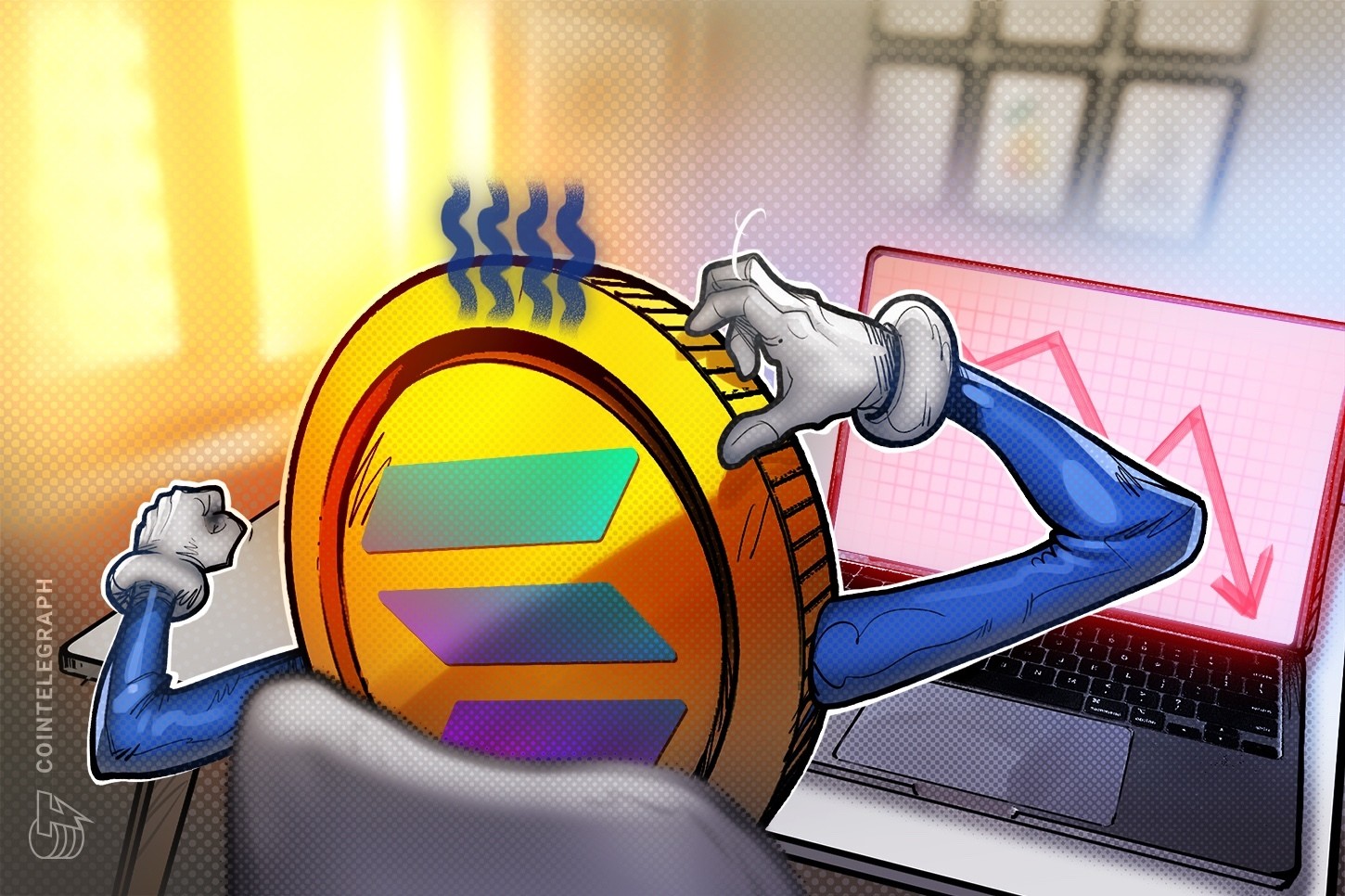
Crypto traders are talking about the SOL price falling due to the risk of FTX selling its $1.06 billion Solana stake. Are they overexaggerating?
For a long time, Solana has been associated with the founder of now-insolvent crypto exchange FTX and hedge fund Alameda Research, Sam Bankman-Fried. He was an early investor in the project and invested in numerous Solana ecosystem projects during the 2020-2021 bull mania.
So when FTX collapsed toward the end of 2022, Solana (SOL) and other “Sam coins” plummeted significantly — with Solana falling to lows of $9.89, down 96.3% from the peak of $259.96.
Since the start of 2023, Solana’s price has staged a recovery, gaining 175% to reach a peak of $27.37 as the ecosystem also witnessed growth.
However, more recently, SOL came under tremendous selling pressure after the Delaware Bankruptcy Court approved the sale of FTX’s digital assets, which include 55.75 million SOL worth $1.062 billion. However, the unlock schedule of FTX’s holdings and derivatives market positioning suggest that a counter move to the upside could happen instead.
After Judge John Dorsey made the ruling at a hearing on Sept. 13, the SOL price touched a weekly low of $17.96.
However, SOL gained around 4% on Sept. 14, with longs worth $800,000 liquidated since the prior day, per CoinGlass data.
Crypto trader MartyParty believes that selling pressure is overblown, as the majority of FTX’s SOL stake is vested from 2025 to 2027.
This is Alamedas Solana wallet which has the rights to the 26,740,743 staked $SOL from 2025-2028.
— MartyParty (@martypartymusic) September 13, 2023
This wallets keys will be sold in the FTX liquidation. Not the $SOL which cannot be unlocked until 2025-2028.
As Ive been posting for weeks - FTX/Alameda only hold 7m $SOL and… pic.twitter.com/WeIkCKf2Ek
Moreover, derivatives traders piled on with short orders after the announcement, which could result in a counter move to the upside.
Most FTX tokens are locked
The Solana Foundation released an update on FTX’s Solana holdings after its collapse, which showed that a portion of SOL tokens held by the defunct exchange are locked until 2027.
According to the schedule, more than 33 million SOL tokens are yet to be unlocked. It represents more than 60% of FTX’s holdings to be sold in the market.
According to the terms of the crypto conversion to fiat by FTX, there will be a cap of $50 million for the first week and $100 million in subsequent weeks, which limits the selling pressure.
There is an option to increase the limit, but it requires prior written approval of the creditors’ committee and ad hoc committee. There is also the option to raise the limit to $200 million weekly with the approval of the court.
Assuming that the creditors can sell all the SOL tokens, they’d need around 10 to 12 weeks to unload their total holdings, which will distribute the selling pressure over time.
In the meantime, the price of SOL may exhibit volatility on both sides, especially if the futures market presents an opportunity for market makers or high-volume traders.
The 30-day average daily volume on spot exchanges is $338 million, per CoinGecko data. On a weekly scale, it is around $2.5 billion, giving FTX’s selling pressure a small percentage of 4%.
MartyParty said of the comparison between daily spot volume and SOL’s potential selling pressure:
A even tiny'er drip you wouldn't even notice. If you thought this event would dent Solana you are wrong and should not listen to grifters on social media and YouTube that know nothing about crypto.
Related: Court approves sale of FTX digital assets, up to $3.4B worth to be unleashed
Is a SOL short squeeze coming?
CoinGlass data shows that the funding rate for perpetual swap contracts on crypto exchanges plunged to -21.1% per annum on Sept. 13, indicating a crowding of short orders.
Perpetual swaps are futures contracts without expiration and a funding rate mechanism that helps in identifying the relative demand for long and short orders. A positive funding rate suggests demand for long orders and vice versa.
The open interest volumes for SOL have increased from $266 million to $327 million over the week, with funding rate data showing that traders have maintained a bearish inclination, opening up the possibility of a short squeeze.
A short squeeze occurs when short traders are forced to buy an asset back at a higher price to close out their short positions as the asset price increases.
Notably, since August, negative funding rates have resulted in flat price returns thus far. However, more often than not, there can be a price surge to scare away the shorts and neutralize funding rates.
According to MartyParty, “retail shorts stacked to $30 liquidation level,” as he expects “all these to be flushed in a market maker squeeze.”
The liquidation heatmap from CoinGlass shows that there is a large number of leveraged positions on both sides of the current SOL price, with the most concentrated at $20.50 and $17.06.
Technically, SOL has faced resistance from the descending trendline since July. It is also trading below its 50- and 200-day moving averages of $21.08 and $22.09, respectively, which could act as resistance levels.

This article does not contain investment advice or recommendations. Every investment and trading move involves risk, and readers should conduct their own research when making a decision.

You can get bonuses upto $100 FREE BONUS when you:
💰 Install these recommended apps:
💲 SocialGood - 100% Crypto Back on Everyday Shopping
💲 xPortal - The DeFi For The Next Billion
💲 CryptoTab Browser - Lightweight, fast, and ready to mine!
💰 Register on these recommended exchanges:
🟡 Binance🟡 Bitfinex🟡 Bitmart🟡 Bittrex🟡 Bitget
🟡 CoinEx🟡 Crypto.com🟡 Gate.io🟡 Huobi🟡 Kucoin.




















Comments